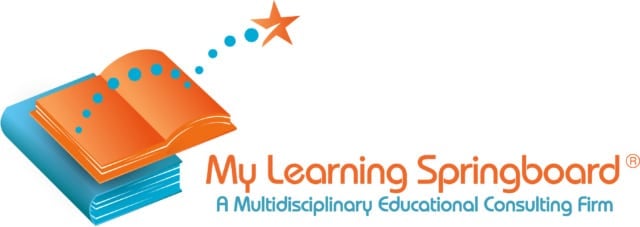 Over the last several school years, we’ve seen an increase in the number of colleges and independent schools adopting test-optional policies. Moreover, some schools adopted a test-blind policy, which is different from a test-optional policy. The intention is good, but the practical navigation is complicated and often more stressful because we’re living in a gray zone. And notably many independent schools and colleges have already started to reverse their test-optional policy.
Over the last several school years, we’ve seen an increase in the number of colleges and independent schools adopting test-optional policies. Moreover, some schools adopted a test-blind policy, which is different from a test-optional policy. The intention is good, but the practical navigation is complicated and often more stressful because we’re living in a gray zone. And notably many independent schools and colleges have already started to reverse their test-optional policy.
In theory, doing away with standardized testing seems like a welcome change, but — in effect — it has upended the application cycle and resulted in a HUGE increase of applications and stiffer competition for spots. Moreover, many private schools have just developed their own assessments and placement tests in lieu of standardized testing, and many colleges have required testing later in the process in order to secure certain majors or to opt into more advanced coursework during a student’s first year. Therefore, the majority of competitive applicants continue to submit standardized test scores in an effort to exceed admissions standards and differentiate themselves from their equally competitive peers while keeping all doors open and avoiding unwelcome surprises later in the application process.
While families should consider a number of factors in deciding whether their child should take a standardized test or which test is the best fit, in the vast majority of instances, we recommend that families pursue testing, even in the current climate with test-optional policies in place. Choosing to test makes sense for a number of reasons:
Test scores are a useful data point.
We believe that there are no “false positives” with test scores. A strong score on a given test section, or across the board, indicates that the student has achieved facility with the skills tested, whether they be math, reading, or a subject area such as those assessed by the AP exams. Because tests are generally timed, a strong score also illustrates the student’s ability to perform under pressure. This is helpful data that, combined with the other pieces of information in a student’s application package, helps admissions officers envision how that applicant will fit in at their school. This data can be advantageous and differentiate applicants in a test-optional environment. Moreover, strong test scores help to demonstrate academic mastery in a climate where there is some concern about grade inflation.
Testing sharpens students’ time management techniques.
It is true that, in many situations, a timed closed-book test is not the best way to measure a student’s abilities. However, it is equally true that timed closed-book tests remain popular on the middle school, high school, and college levels. Good test preparation helps students learn to stay focused and to use their time wisely. These techniques can help them perform better and reduce stress as they take exams and various classroom assessments.
Test preparation is a vehicle for skills enrichment.
The SAT asks students to read seminal historic documents. The ACT asks students to think analytically about charts, graphs, and scientific experiment design. The ISEE and SSAT asks students to expand their working vocabularies and enhance their math skills and problem solving strategies. As students undertake test preparation for a specific assessment, the work they do helps them excel in their broader academic pursuits. A test-optional policy helps to reduce the pressure around high stakes testing, but the preparation itself is leveraged well beyond the official testing.
Test scores can clear the path to advanced classes.
In the case of Advanced Placement tests (and previously the SAT subject tests, which were abruptly “retired” by the College Board in January 2021), a high enough score in high school can vault a new college student over the introductory courses and straight into higher-level work. In a test-optional environment, and with distance learning changing the nature of course-based assessment, these strong data points help to further differentiate a candidate.
Test scores keep students’ options open.
After a student takes the ACT or SAT, the scores are generally considered current for at least three years. If a student who took the test in high school later wants to transfer colleges, they only need to focus on keeping their grades up and applying to new colleges. However, if they never took the ACT or SAT, they might have to add test preparation to their already busy schedule. It’s difficult to predict if a future college consideration may have (or maintain) a test-optional policy.
We recommend students begin preparing for their tests well ahead of time, although we recognize that many juniors are getting a later start again this year. That’s okay, we believe any time can be the right time to start becoming a stronger tester. Ideally, we work with students over a longer period of time so that test preparation does not feel like cramming. We find that extended periods of time for preparation help students to significantly reduce test anxiety, master content, and internalize strategies.
As a general process, our students applying to grades 5 through 12 (ISEE/SSAT) and college (ACT, SAT, and/or APs) begin by taking a practice test that serves as a benchmark a year or more in advance of actually taking an official test. Based on this performance, we recommend a plan to maximize preparation time. For the ISEE, SSAT, ACT, and SAT, we most often have an English teacher and a math teacher working with a student as the math, reading, and verbal reasoning sections require specialized expertise. Often they require different efforts, too. With all the changes surrounding test-optional policies, it’s more confusing than ever for parents and students to navigate. We can help.
Brad Hoffman and Faya Hoffman, Board Certified Educational Planners and Learning Specialists

